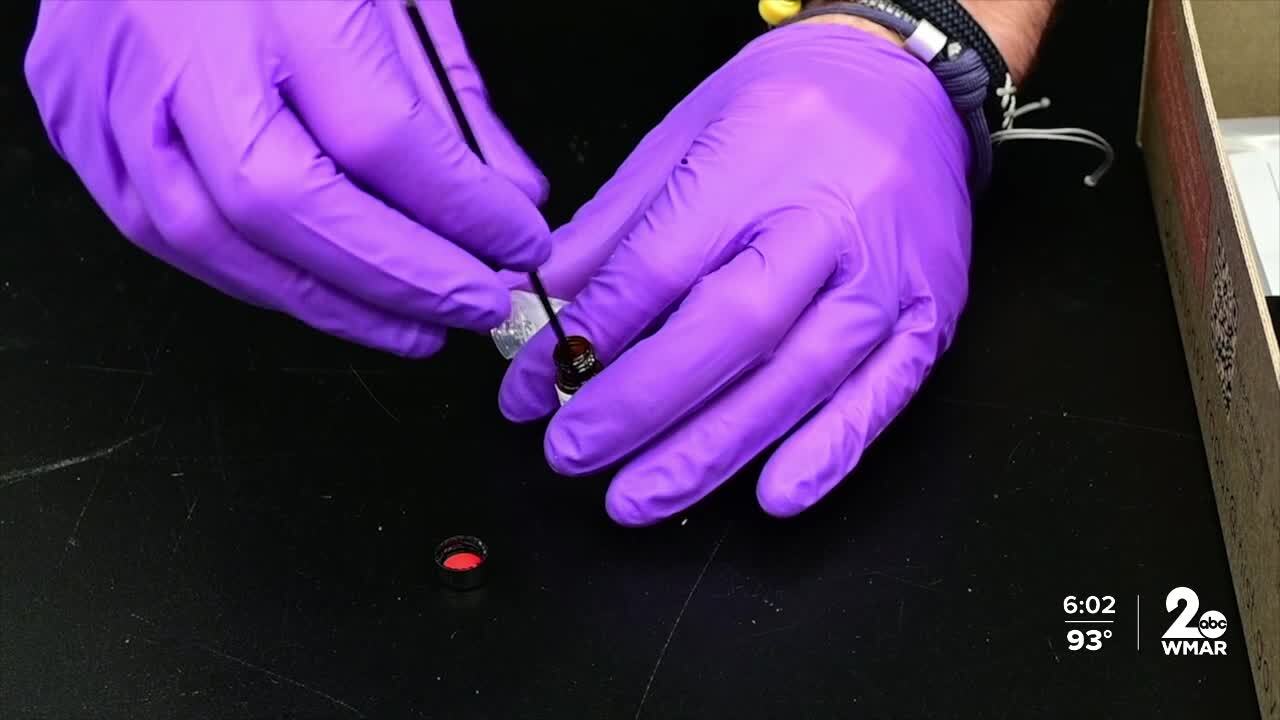Editor's note: NIST responded to our request for information after this story originally aired and was published. We've included their statement in the article below. The Baltimore Police Department also responded to NIST's test results after publication. Their response is included below.
In a previous version of this story, WMAR-2 News stated that the city sent the samples to NIST. Mayor Brandon Scott disputed that on Friday. It's unclear how NIST obtained the samples.
People waiting for the bus at the corner of Pennsylvania and North avenues early Thursday afternoon remained unfazed to all the activity across the street - emergency responders treating a man who appeared to be suffering from a drug overdose.
"This has been going on," resident Lisa Logan said. "We got people that that's overdosing around the corner on Etting Street. We had overdoses on the bus stop. I even lost my nephew to an overdose on the bus stop."
"So, it happens a lot down here, but not to the extent like that was, that was terrible. That was really rough," Ronny Wells said.
Wells is referring to last week's mass overdose, which sent a staggering 27 people to the hospital - some in critical condition.
The area is notorious for being an open-air drug market.

WATCH: Testing and analyzing drug samples from last week's mass overdose in Penn North
"What I heard was that whoever it was, they were giving testers out, you know, they try to put the drug out [to see if] the public likes it and it was just a bad batch," Wells said.
To get to the bottom of what exactly was in the drugs, samples were sent to the National Institute of Standards and Technology (NIST). The federal lab has a program that's called "RaDAR," or Rapid Drug Analysis and Research.
The program started in Maryland in 2021. The goal is to "capture the chemical makeup of the illicit drug landscape in near real-time," according to its webpage. Researchers analyze trace drug residue samples to screen for emerging substances.
In the Baltimore mass overdose samples, according to the Baltimore Sun and the Baltimore Banner, they found a combination of substances that are already common in Maryland's illegal drug supply - including fentanyl. But according to the Sun and the Banner, lab testing also revealed a new one, a benzodiazepine derivative called N-methylclonazepam that has strong sedative properties.
After those reports were published, NIST released the following statement to WMAR-2 News:
"NIST would like to clarify the information it released on July 17, 2025, which indicated certainty in the connection between drug residue samples it tested and the July 10 overdose incident. NIST is confident in the results of its testing. However, NIST’s role does not include establishing a connection between the samples it receives and any particular incident. The Baltimore Police Department is conducting an investigation into that incident. NIST is not involved in that investigation."
The Baltimore Police Department also responded to NIST's test results:
"BPD is aware of recent findings released by the National Institute of Standards and Technology (NIST), regarding testing of samples sent to them that was suspected to potentially be connected with the recent overdose event. However, it is important to note, the Baltimore Police Department cannot independently verify the origin, time or circumstances under which these particular samples were collected or sourced.BPD has full confidence in results produced by our Crime Lab, which tested a sample collected on the day of the incident directly from the scene and has been maintained in the evidentiary chain of custody. The results of that testing differ slightly from those conducted by NIST, and, therefore, BPD will continue to utilize results produced by our Crime Lab for criminal investigatory purposes.These independent testing pathways are standard practice and BPD has not directly coordinated with NIST regarding their testing of samples.This investigation remains active and ongoing, and we are working closely with our federal partners to ensure a thorough and accurate investigation. We remain committed to supporting the city's harm reduction emergency response and risk reduction efforts."

An In Focus look at N-methylclonazepam
Mayor Brandon Scott addressed the incident on CNN Wednesday night: "If you are someone who is pedaling drugs, a drug dealer doing harm, literally giving people things you know will kill them you need to be removed from that community and put in jail but we also have to grow and evolve in our understanding of how to deal with addiction."
Nearby on the 1700 block of North Carey Street, Baltimore Police made five drug arrests over the weekend. Police say these arrests were not related to the overdose event last week.
The department says it's focused on addressing open air drug markets across the city, which "has led to an increase in both felony and misdemeanor drug arrests this year."
"The number one thing is find out the root cause of why the people are still getting high," resident Lisa Logan told WMAR-2 News. "If people are going to jail and coming home to nothing, then they're going to start getting high again. If nobody don't have nothing, they're getting high to alleviate or escape from what they're going through."
The Baltimore Police Department's investigation into the mass overdose is ongoing.




